Posted by Bob Lefebvre, Calgary
The last two winters have seen huge irruptions of redpolls into the Calgary area, and across much of southern Canada and the northern continental US. This doesn’t happen every year, and it has been difficult to find any Common Redpolls in some recent winters. Finding the elusive Hoary Redpoll is that much harder. But the large flocks gathering at our backyard feeders the past two years have given us an opportunity to find that one-in-a-thousand bird.
Common Redpolls at the feeder.
Typical Common Redpolls.
Common Redpoll.
But what is a Hoary Redpoll? The problem with redpoll identification is that the defining characteristics of the two species grade smoothly together. Common Redpolls are generally darker, streakier, and larger-billed, but there is no clear gap between paler, lightly-streaked, smaller-billed Common Redpolls and darker, streakier, larger-billed Hoary Redpolls. (See Pat Bumstead’s recent post on the Birding is Fun! blog.)
Common Redpoll – dark, large bill, heavy streaking.
Because of this difficulty, and because Common Redpolls are vastly more numerous on the southern wintering grounds, it has long been believed that Hoary Redpolls are under-reported there. Birders are uneasy about placing an ID on a rare bird unless it is a certainty, so only Hoaries with field marks at the extreme end of the spectrum were reported, and the rest were called Commons.
But is the Hoary Redpoll actually a species at all? Is it anything? (The title of this post is a homage to Albert E. Woods’ 1957 paper, “What, if Anything, is a Rabbit?” He was exploring the question of where the rabbits and hares fit into the orders of mammals. A preview can be seen here.) Recently the long-debated question of whether Hoary and Common Redpolls should be considered separate species was renewed when Andy Boyce pointed out, on the American Birding Association blog, that there is no meaningful genetic difference between any of the accepted species or subspecies of redpolls, which implies that they are all one species. Hoary and Common have now been lumped into one species by Birdlife International, but not yet by the ABA. Also, despite the lack of discernable genetic differences, the two occupy different breeding territories and do have subtle physical differences. So for the time being, we are free to try to ID them, and add them to our lists.
I’ve seen a few redpolls over the last two winters that I have called Hoaries, and quite a few that I wasn’t positive about. Lighter individuals often stand out, but sometimes it is just a male Common (which are lighter than females). I look for a white rump and unstreaked undertail coverts (at most, one streak).
Too many streaks under tail – Common.
Raising the wings to show off heavy streaks – Common.
Large bill, too many streaks under tail – Common.
Here is one that I initially thought might be a Hoary, but in the end decided it wasn’t. The bill looks a little small and the undertail coverts unstreaked, but the rump is too streaky. The fact that it is fluffed out makes it look more like a Hoary. Maybe it is.
Common?
This one looks more like it. Very light on the rump, plus a small bill.
Probable Hoary Redpoll.
The same bird from a different angle.
Often it is difficult to see the rump or undertail coverts in the field, but you can usually get a look at the bird’s head. Although many authorities focus on the streaking to differentiate redpolls, Pete Dunne emphasizes the bill size. In his Essential Field Guide Companion, he gives some memorable advice on how to distinguish the two, which I keep in mind when I’m scanning flocks of redpolls. He says that Common Redpolls have an ordinary conical finch bill, longer than it is wide at the base. Hoaries, by contrast, have a pushed-in bill that is only as long as it is wide. Since Hoaries often have a puffed-out forehead as well, it emphasizes the small-billed look. As Dunne puts it, “If you look at the face of a redpoll and it looks like a normal finch, it’s Common. If it looks like it was hit in the face with a potato-filled sock, it’s Hoary.”
Someone has hit this bird in the face with a potato-filled sock.
A very light male, complete with pushed-in face and small bill. Hoary Redpoll.
This one looks very frosty, but has it had the potato-sock treatment?
It certainly has. Hoary Redpoll.
I kind of hope that Hoary Redpolls continue to have full species status – they are fun to look for. (And of course we can continue to look for them even if they are relegated to subspecies status.) But in any case I’ve really enjoyed having all the redpolls around for the past couple of winters. After two Redpoll Winters in a row, I don’t expect to see many next year.
Common Redpoll.



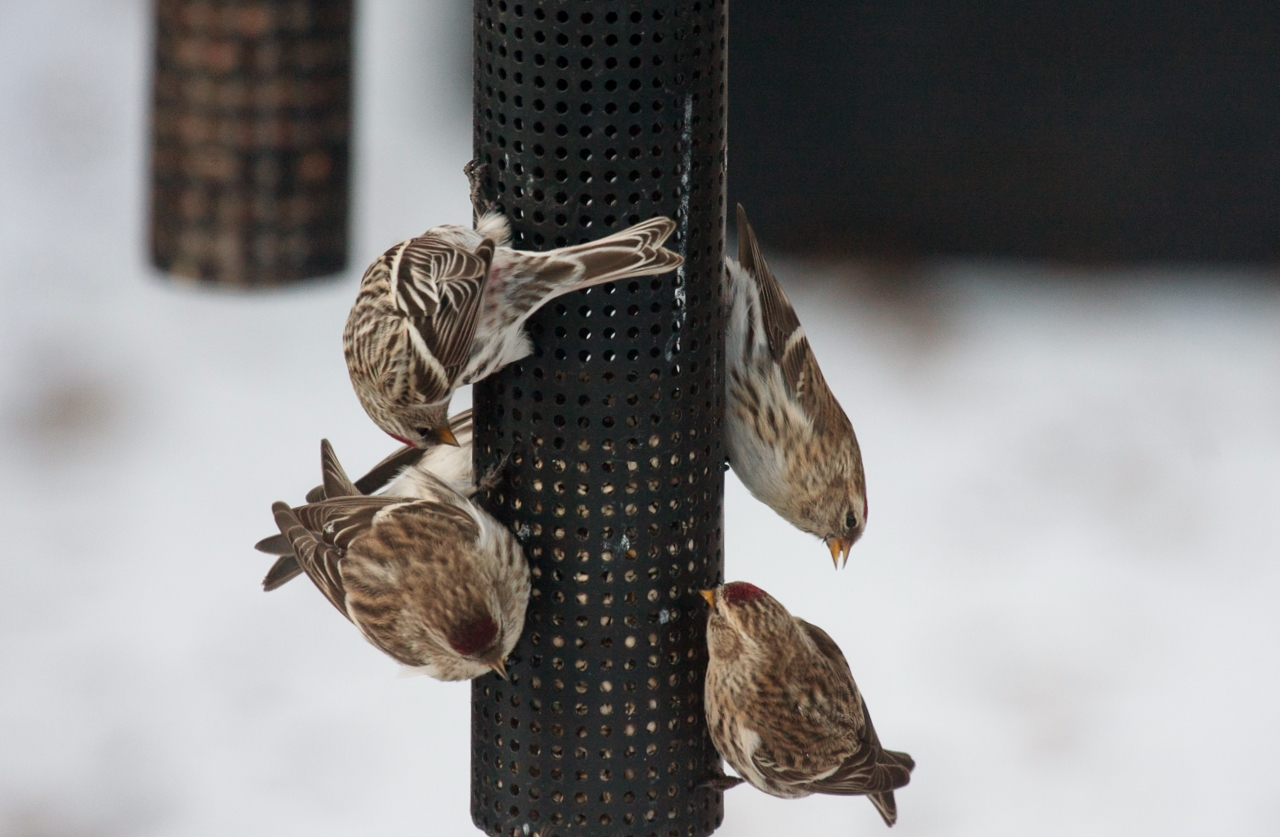


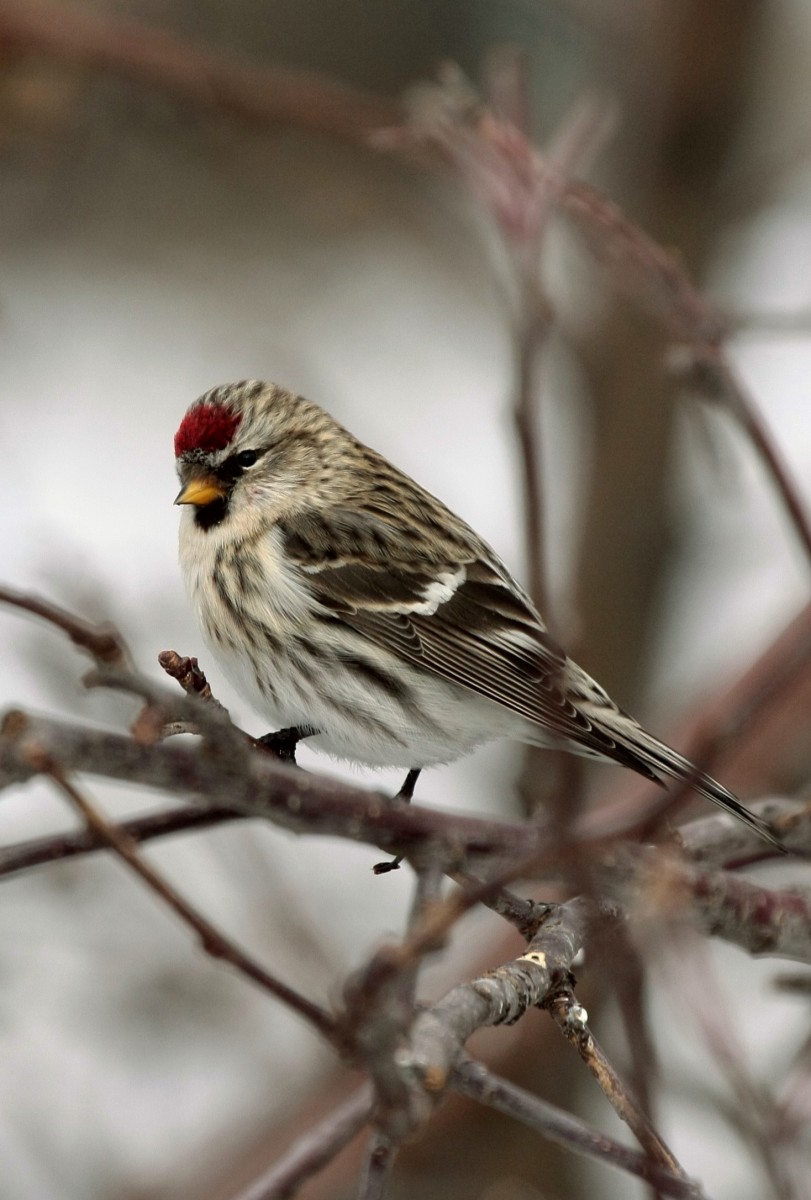
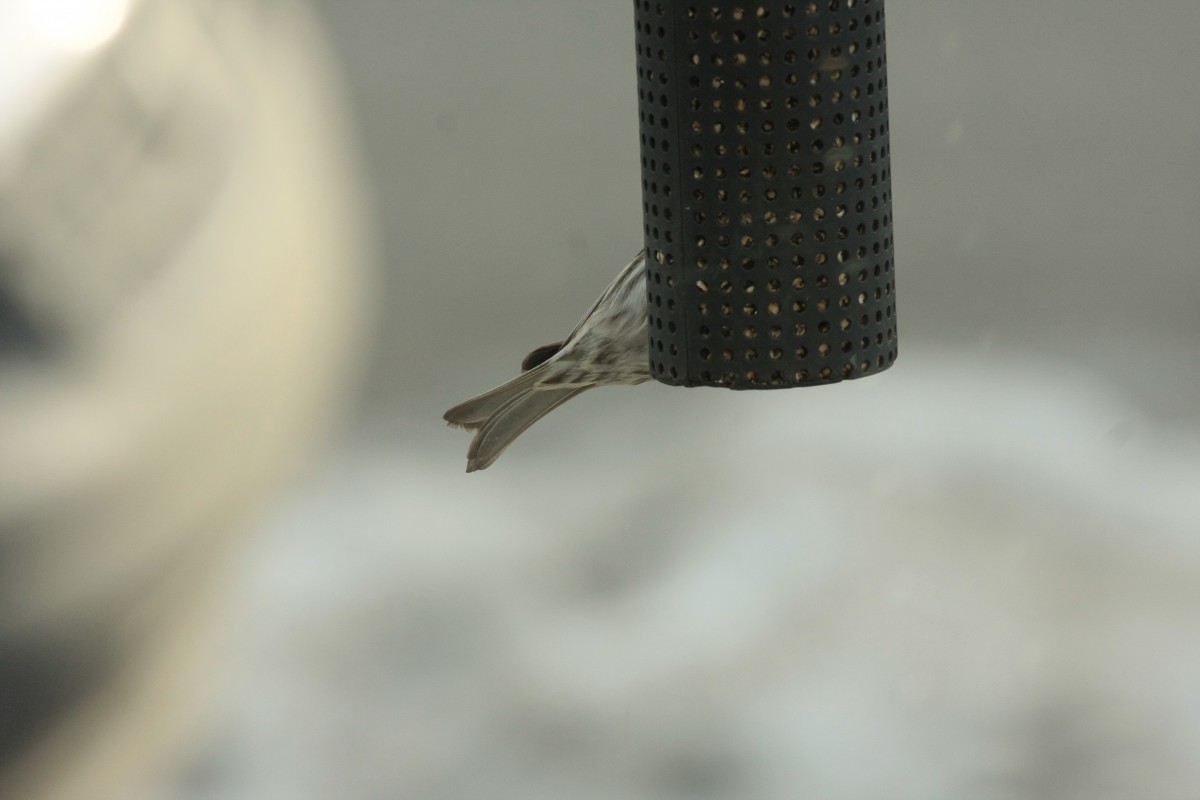
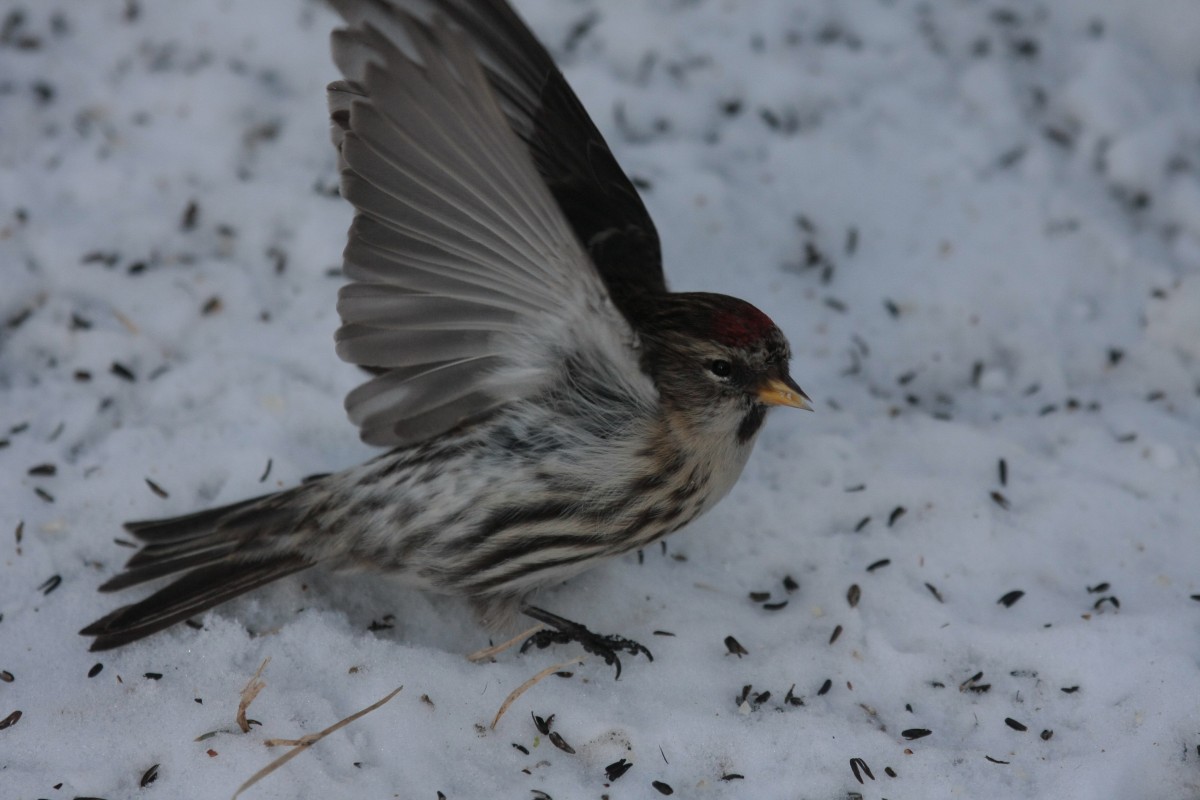
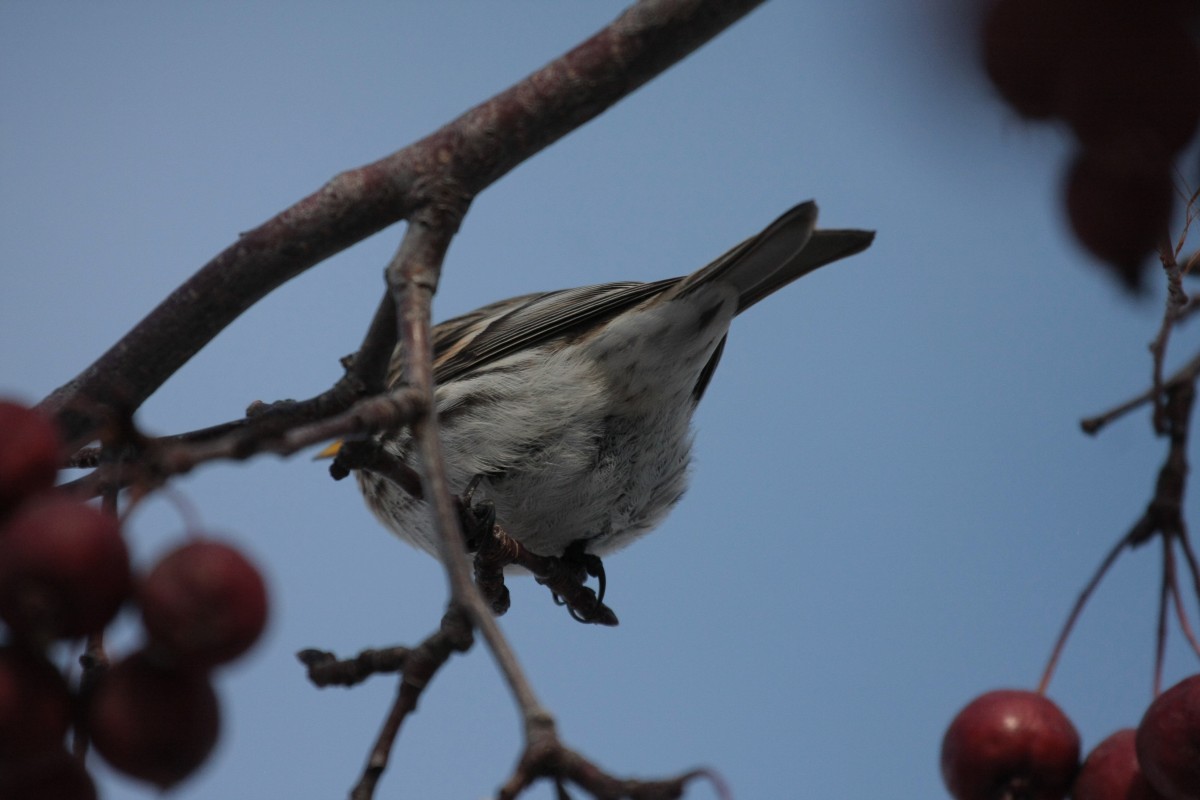



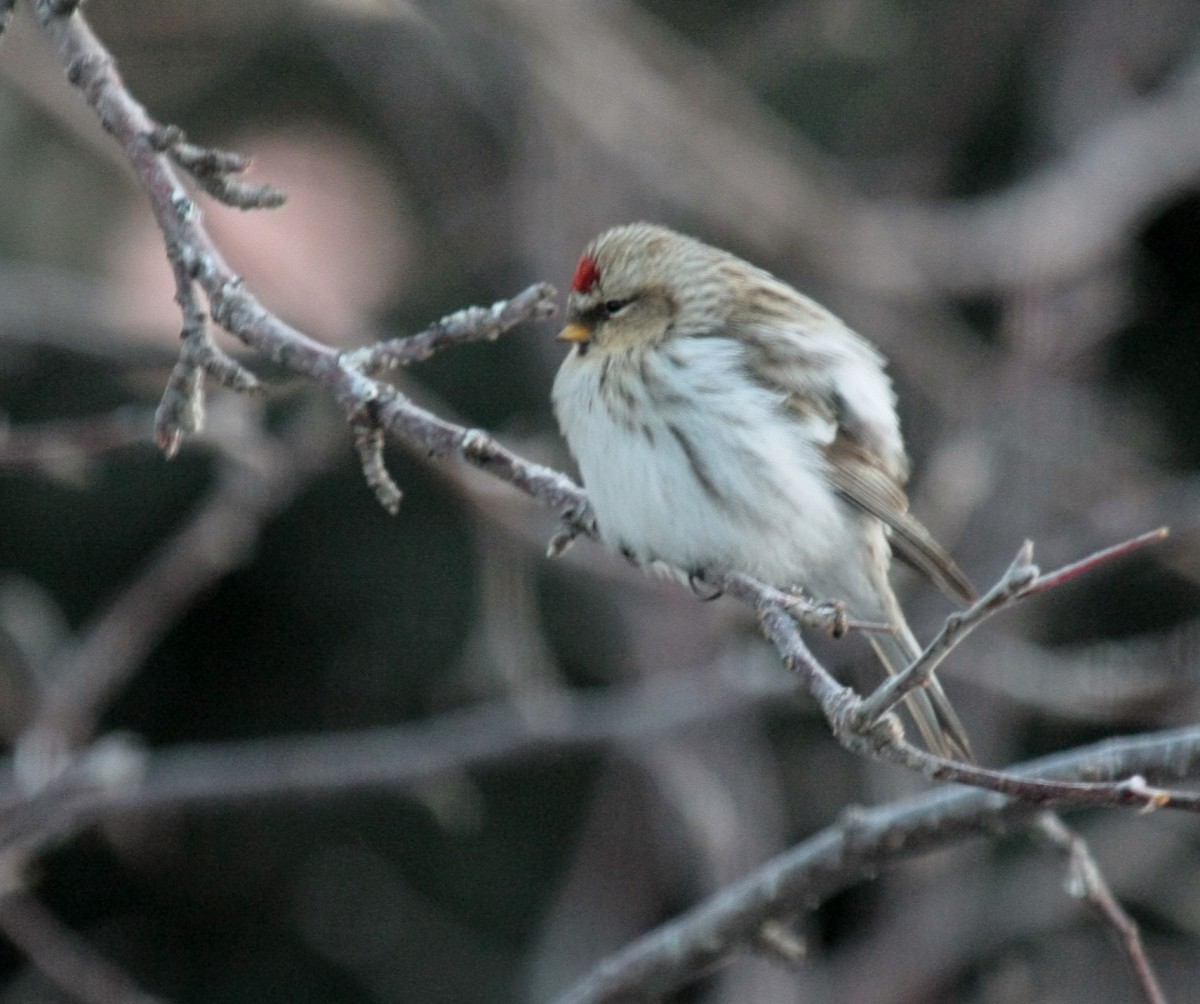
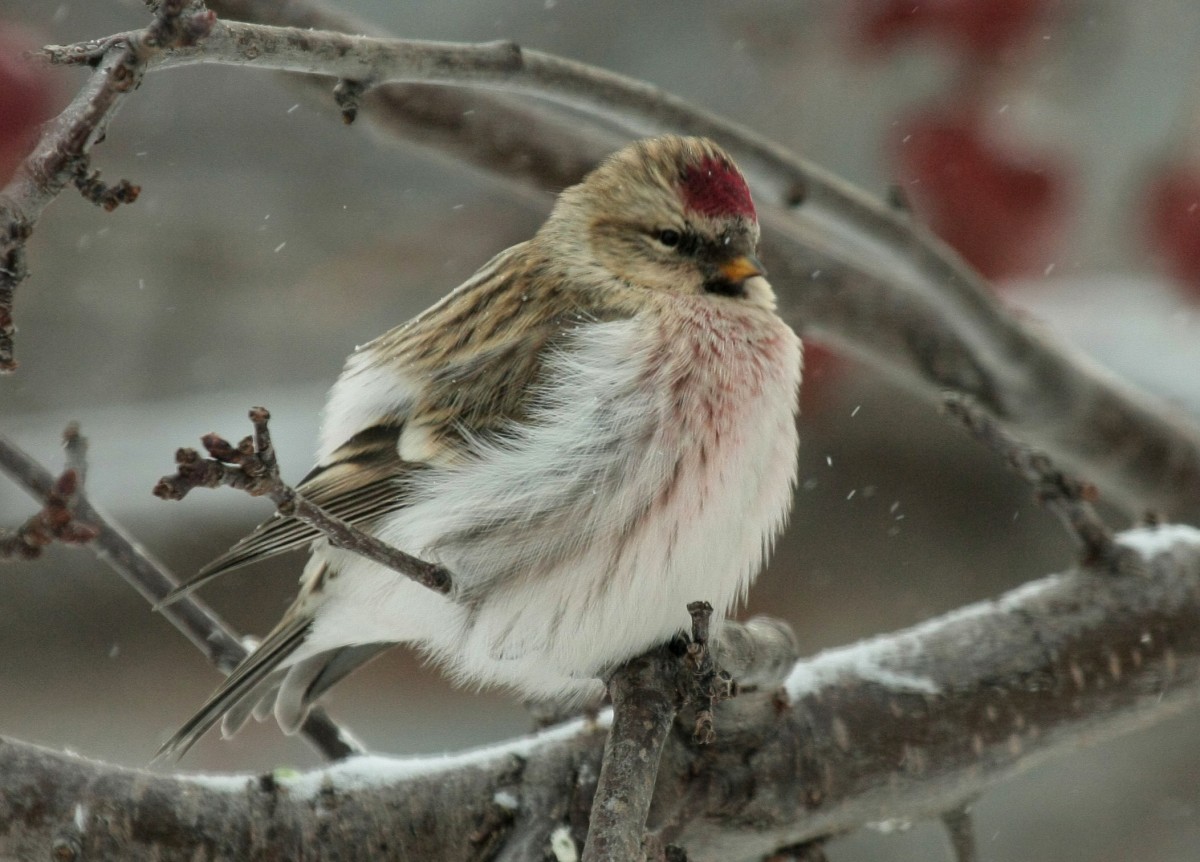
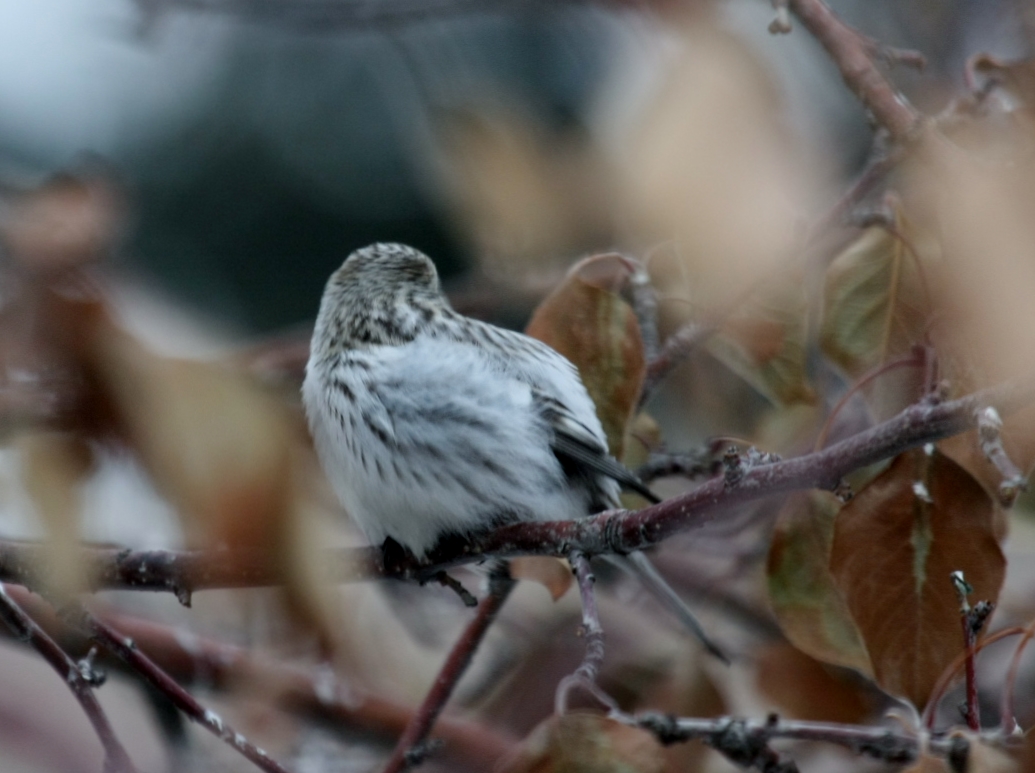
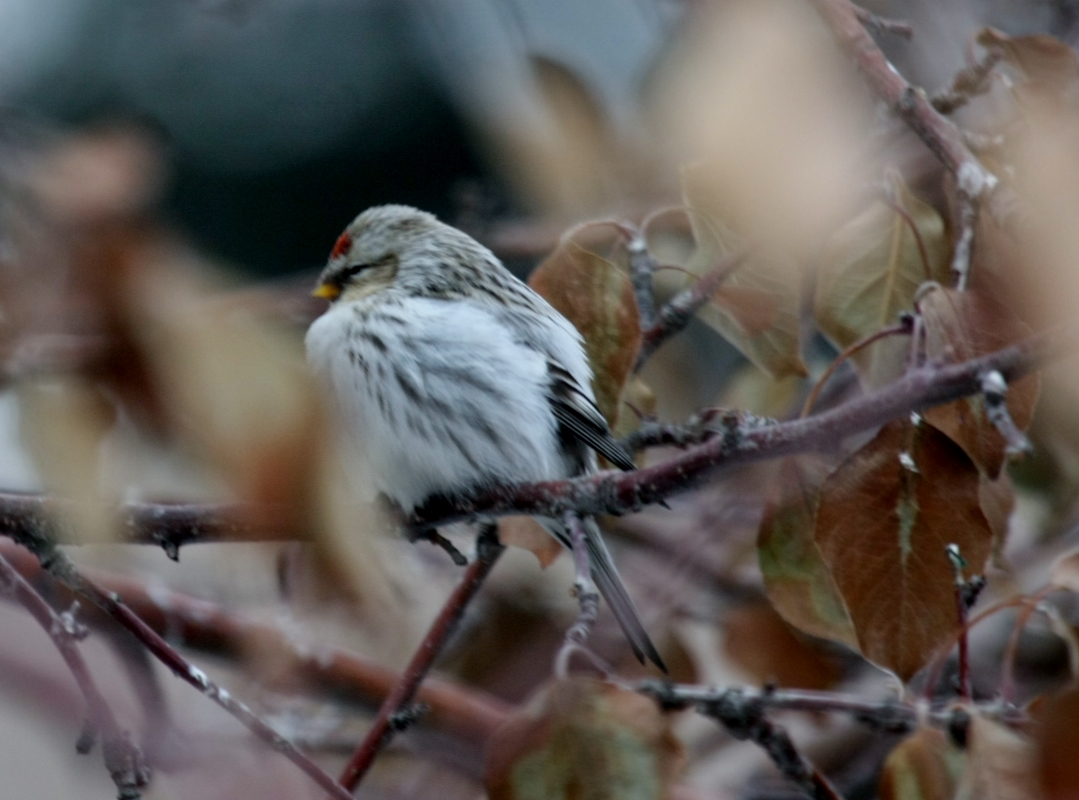
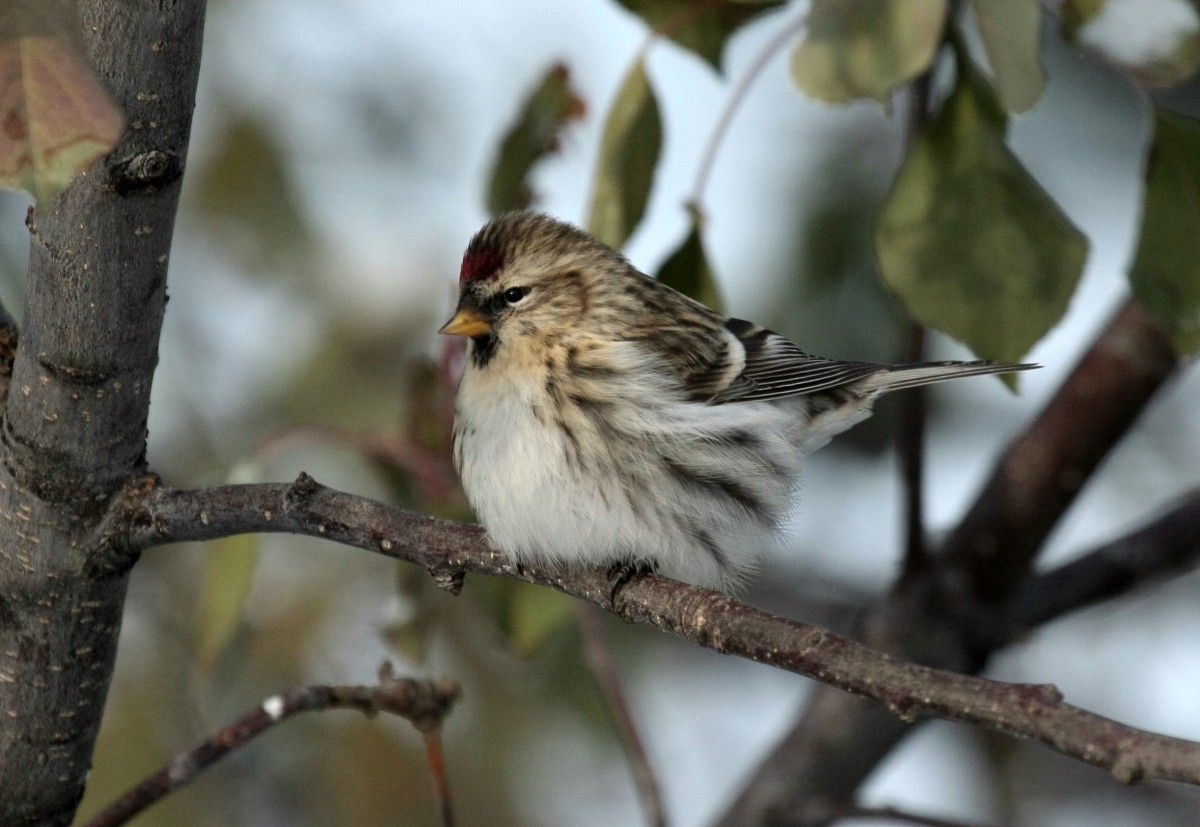
I had a few Hoary Redpolls at my feeders earlier this winter and I went through the same identification process you did.
I did link to that article in the post (“Andy Boyce pointed out that…”). Maybe I didn’t make it clear that it was a link. If you go to that article, read all the comments for a lot more insight into this issue.
Great article.
Here’s a link to another topical piece asserting that the Hoary Redpoll distinction is a false dichotomy. Interesting stuff.
http://blog.aba.org/2013/01/open-mic-redpolls.html